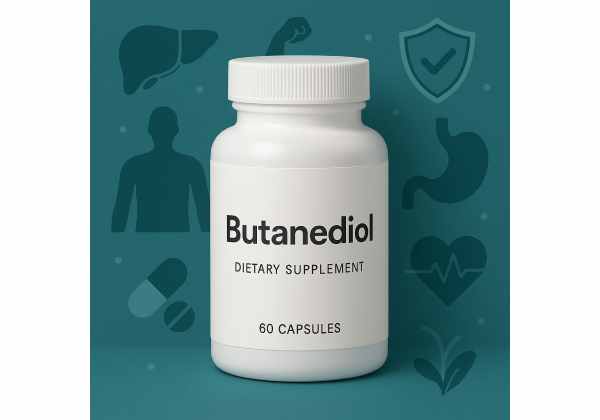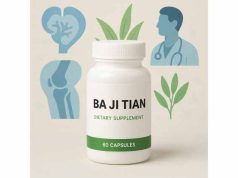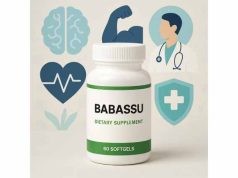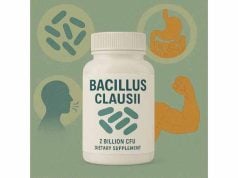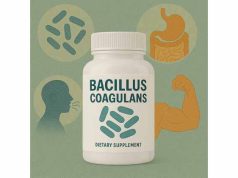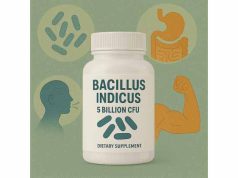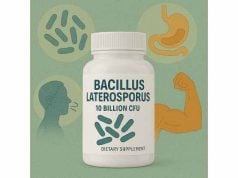Butanediol, often referred to as 1,4-butanediol (1,4-BDO), is a colorless, water-soluble organic compound that has captured the interest of both scientific communities and wellness circles. While widely known for its industrial applications in manufacturing plastics and solvents, 1,4-butanediol has a unique role as a precursor to gamma-hydroxybutyrate (GHB) in the body. This property has driven growing curiosity about its effects on relaxation, sleep, and cognitive function. However, its dual identity as both a therapeutic agent and a substance of misuse requires careful consideration of benefits, risks, legal status, and best practices for responsible use.
Key Takeaways
- Dual-Use Compound: Butanediol is both an industrial chemical and a substance with physiological effects, acting as a GHB prodrug.
- Potential Wellness Benefits: May promote sleep, relaxation, and reduced anxiety—though evidence is limited and safety is a concern.
- Serious Risks and Regulation: Risk of abuse, toxicity, and legal restrictions make safe, informed use essential.
- Not a Typical Supplement: Requires strict adherence to dosage, and is not suitable for self-experimentation or unsupervised use.
- Consult Professionals: Always seek guidance from healthcare providers before considering any form of butanediol for health purposes.
Table of Contents
- Butanediol Explained: Chemical Nature and Wellness Context
- Mechanisms of Butanediol: How It Affects the Body and Brain
- Benefits and Researched Uses of Butanediol in Health and Medicine
- Butanediol Safety Profile, Side Effects, and Interactions
- Dosage Guidelines, Best Practices, and Legal Status of Butanediol
- Butanediol Frequently Asked Questions (FAQ)
Butanediol Explained: Chemical Nature and Wellness Context
Butanediol, or 1,4-butanediol, is a four-carbon diol alcohol with the formula C4H10O2. Its main function in industry is as a solvent and precursor for the production of plastics, elastic fibers, and polyurethanes. However, in the context of human physiology and supplementation, the story of butanediol takes a complex and controversial turn.
Chemical Structure and Industrial Role
- Structure: Linear chain diol (HO–CH₂–CH₂–CH₂–CH₂–OH)
- Synonyms: 1,4-BDO, tetramethylene glycol
- Industrial applications: Used in manufacturing, chemical synthesis, and as a solvent.
Conversion to GHB: The Key to Its Physiological Action
What makes 1,4-butanediol unique among diols is that, once ingested, it is rapidly converted by the body’s enzymes (alcohol dehydrogenase and aldehyde dehydrogenase) into gamma-hydroxybutyric acid (GHB). GHB is a naturally occurring neurotransmitter and a medication used to treat narcolepsy and some sleep disorders.
- Prodrug to GHB: When consumed, butanediol is metabolized to GHB, exerting sedative and calming effects.
- Duration: Butanediol’s effects typically last longer than GHB’s due to slower conversion and absorption.
Butanediol in the Supplement World
Although not typically marketed as a dietary supplement, butanediol has been explored for potential benefits similar to those of GHB, such as:
- Promoting relaxation and sleep
- Enhancing cognitive recovery
- Supporting mood stabilization
However, these uses exist in a gray area. Unlike common herbal supplements, butanediol is not approved for over-the-counter human consumption and is regulated or banned in many regions due to its potential for misuse and toxicity.
Historical and Alternative Use Cases
- Pharmaceutical interest: Early studies examined butanediol and related compounds for anesthesia and sedation.
- “Smart drugs” community: Attracted interest for its nootropic (brain-enhancing) and sleep-promoting properties.
- Fitness and bodybuilding: Some have used butanediol, or related compounds, for growth hormone stimulation or recovery, though with unclear efficacy and notable safety concerns.
Cautions and Context
Butanediol’s unique status as both a chemical precursor to GHB and a controlled substance in many countries means it straddles the worlds of therapeutic research, gray-market supplement sales, and recreational misuse. Understanding this context is crucial for anyone considering its use for health, sleep, or cognitive performance.
Notable Facts for Users
- Not a vitamin, mineral, or herb: Butanediol is a synthetic compound, not a natural dietary constituent.
- Legal status varies: Its sale and possession may be restricted or illegal, especially where GHB is controlled.
- Potential for harm: Unsupervised use can lead to dangerous side effects or life-threatening intoxication.
Mechanisms of Butanediol: How It Affects the Body and Brain
Understanding butanediol’s effects means diving into its metabolism and how its main byproduct, GHB, interacts with the human nervous system. This metabolic pathway underlies both the potential benefits and serious risks of butanediol use.
1. Metabolism: Conversion Pathways in the Body
- Absorption: Butanediol is rapidly absorbed when taken orally.
- Enzymatic conversion: In the liver, alcohol dehydrogenase converts butanediol to gamma-hydroxybutyraldehyde, which is then converted by aldehyde dehydrogenase to GHB.
- Onset: Effects typically begin within 30–60 minutes, with a peak lasting 2–4 hours, though the conversion process is slower than with direct GHB use.
2. Central Nervous System Effects
Once converted, GHB acts on several key neurotransmitter systems:
- GABA-B receptor agonist: GHB activates these receptors, producing calming, sedative, and anxiolytic (anti-anxiety) effects.
- Dopamine modulation: GHB can initially inhibit, then stimulate, dopamine release, influencing mood and alertness.
- Growth hormone release: GHB has been shown to stimulate growth hormone secretion, though the significance for healthy users is debated.
3. Sedative and Sleep Effects
- Sleep induction: Butanediol, via its conversion to GHB, can promote sleep onset and deepen certain stages of sleep, sometimes used in narcolepsy or sleep disorders (under medical supervision).
- Muscle relaxation: Acts as a mild muscle relaxant and anti-spasmodic in some users.
4. Euphoria and Mood Changes
- Mild euphoria: Some users report pleasant feelings of well-being, relaxation, and sociability at low to moderate doses.
- Cognitive changes: Doses that are too high can lead to confusion, disorientation, or even amnesia.
5. Potential for Abuse and Dependence
- Tolerance: Repeated use can lead to tolerance, requiring higher doses for the same effect.
- Dependence: Withdrawal can be severe, similar to alcohol or benzodiazepines, making unsupervised use highly risky.
6. Other Systemic Effects
- Body temperature regulation: May impair body temperature control, especially at high doses.
- Cardiovascular: At normal doses, minor effects on blood pressure and heart rate are seen; at toxic doses, more serious effects can occur.
7. Drug Interactions and Risks
- Alcohol and depressants: Combining with other CNS depressants, including alcohol, greatly increases risk of respiratory depression and overdose.
- Enzyme variability: Individuals with different levels of alcohol dehydrogenase may experience variable and unpredictable effects.
Summary of Mechanisms
- Butanediol is a prodrug for GHB, producing sedative and calming effects.
- Its impact on the nervous system mimics GABAergic drugs, with risks of overdose, addiction, and dangerous drug interactions.
- The line between “therapeutic” and “toxic” doses is very thin.
Benefits and Researched Uses of Butanediol in Health and Medicine
Butanediol’s physiological effects are almost entirely due to its conversion into GHB—a molecule that has both clinical and controversial recreational histories. The following benefits have been reported in research and anecdotal accounts, but must be weighed against significant risks.
1. Sleep Disorders and Narcolepsy
- GHB (and thus butanediol, indirectly) is FDA-approved (as sodium oxybate) for narcolepsy with cataplexy.
- Improves sleep architecture: Deepens slow-wave (restorative) sleep, may reduce daytime sleepiness.
- Sleep onset: May help individuals with severe insomnia fall asleep faster (medical use only).
2. Anxiety and Stress Relief
- Sedative/anxiolytic effects: At low doses, some report reduced anxiety, muscle tension, and improved mood. This is due to GABA receptor activation.
3. Growth Hormone Release and Recovery
- Bodybuilding and athletic recovery: Some users seek butanediol/GHB for its growth hormone-stimulating effects, though results are variable and clinical benefit for healthy people is unproven.
4. Cognitive Effects and “Nootropic” Claims
- Memory and focus: Anecdotally, some report increased clarity or sociability, but excessive doses can impair cognition, coordination, and lead to blackouts.
- Hangover prevention: Some recreational users have claimed reduced hangover symptoms, though this is neither safe nor recommended.
5. Alcohol Withdrawal and Addiction Medicine
- GHB has been studied as a treatment for alcohol dependence and withdrawal in controlled settings.
- Butanediol has been explored as a substitute due to its conversion to GHB, but with significant safety concerns.
6. Controversial and Non-Medical Uses
- Party drug/recreational misuse: Butanediol is sometimes misused for its euphoric effects. This use is dangerous, unpredictable, and carries a high risk of overdose.
- Self-experimentation: Not recommended due to narrow safety margins and risk of serious complications.
What the Research Says
- Most clinical research involves GHB, not butanediol directly.
- Butanediol’s therapeutic window is narrow: Effective and toxic doses are close, making precise measurement and medical oversight essential.
- Long-term safety is not established for any over-the-counter or “supplemental” use.
Summary of Evidence
- Butanediol has some benefits when used as a precursor to GHB in clinical, controlled situations.
- Recreational or self-directed use is not safe or supported by medical authorities.
- The potential for serious side effects often outweighs any benefits for the general public.
Butanediol Safety Profile, Side Effects, and Interactions
Butanediol (1,4-BDO) presents a unique safety profile due to its conversion into GHB in the body—a process that introduces both pharmacological benefits and serious health hazards. Understanding these risks is crucial for anyone considering its use. The compound is not a typical dietary supplement, and responsible handling and medical oversight are essential.
1. General Tolerability and Acute Risks
- Narrow safety margin: The difference between an effective dose and a toxic dose is very small. Overdose can occur easily, even with modest increases in intake.
- Unpredictable metabolism: Individual differences in liver enzyme activity make effects highly variable from person to person, increasing the danger of unintended overdose.
Common acute side effects include:
- Drowsiness or deep sedation: Even moderate doses can induce intense sleep or “passing out.”
- Dizziness and disorientation: Users may experience confusion, poor balance, and slowed reflexes.
- Nausea and vomiting: Gastrointestinal upset is common, especially with higher or rapidly consumed doses.
- Muscle relaxation: May result in slurred speech, unsteady gait, or temporary muscle weakness.
2. Severe Adverse Effects and Toxicity
- Respiratory depression: Overdose can slow or stop breathing, which is potentially fatal.
- Seizures: High doses or abrupt withdrawal can trigger convulsions in some individuals.
- Loss of consciousness/coma: Butanediol and GHB overdoses can lead to unresponsiveness, coma, or even death.
- Memory loss (blackouts): Amnesia for events during intoxication is common, especially at higher doses.
3. Long-Term Risks and Dependence
- Tolerance: Repeated use quickly leads to tolerance, requiring higher doses for the same effect.
- Addiction: Physical dependence can develop with regular use, leading to a dangerous withdrawal syndrome similar to that of alcohol or benzodiazepines.
- Withdrawal symptoms: These include insomnia, anxiety, tremors, hallucinations, rapid heart rate, and—in severe cases—delirium or seizures. Medical supervision is required for withdrawal.
4. Drug Interactions
Butanediol’s greatest danger lies in its interactions with other substances, especially:
- Alcohol: Combining with alcohol or other central nervous system depressants (benzodiazepines, barbiturates, opioids) greatly increases the risk of respiratory arrest and fatal overdose.
- Prescription sedatives: All drugs that slow brain or breathing function (sleeping pills, anti-anxiety meds, antipsychotics) may interact dangerously.
- Stimulants: While not directly life-threatening, mixing with stimulants (cocaine, amphetamines) can mask sedative effects, leading to accidental overdose.
5. Special Populations and Contraindications
- Children and adolescents: Never safe—risk of accidental poisoning or fatal respiratory depression.
- Pregnant and breastfeeding women: Strongly contraindicated due to potential harm to the fetus or nursing infant.
- People with liver disease: Impaired metabolism increases toxicity risk.
- Elderly individuals: Higher sensitivity to sedative effects and drug interactions.
6. Signs of Overdose and When to Seek Help
Seek emergency medical attention if any of the following occur after butanediol ingestion:
- Unresponsiveness or difficulty waking
- Slow, shallow, or irregular breathing
- Seizures or convulsions
- Blue lips or fingertips (signs of low oxygen)
- Vomiting while unconscious
7. Safety and Legal Considerations
- Legal status: In many countries, 1,4-butanediol is a controlled substance due to its potential for abuse and conversion to GHB. Possession or distribution without proper authorization is often illegal.
- Product purity and contamination: Unregulated sources may contain impurities, toxic byproducts, or inaccurate dosages, further increasing risk.
8. Responsible Use Guidelines
- Medical oversight is mandatory: Butanediol should never be self-administered without medical supervision.
- Do not mix with alcohol or sedatives.
- Strictly avoid in vulnerable groups: Children, pregnant women, those with chronic disease, and the elderly.
- Monitor closely for overdose symptoms: Immediate action can be lifesaving.
Summary
Butanediol is not suitable for casual or unsupervised use. While it has pharmacological effects, the dangers of toxicity, rapid dependence, and life-threatening side effects far outweigh any potential benefits for most people. Professional guidance is essential.
Dosage Guidelines, Best Practices, and Legal Status of Butanediol
Unlike common dietary supplements, butanediol does not have an established safe dose for the general public. Most dosing information comes from clinical settings or research contexts involving GHB precursors, not from wellness or over-the-counter use. If butanediol is being considered for therapeutic reasons, it should only be under the strict direction of a healthcare provider.
1. Clinical Dosing Context
- No approved supplement dose: Butanediol is not recognized as a dietary supplement by the FDA or equivalent agencies worldwide.
- Therapeutic doses (research): Limited studies use oral doses ranging from 20–50 mg per kg body weight, but individual response and risk of overdose vary widely.
- Narcolepsy/GHB dosing: For reference, sodium oxybate (pharmaceutical GHB) is dosed in the range of 4.5–9 g nightly in divided doses for narcolepsy, but these are NOT equivalent to butanediol dosing due to metabolic differences and risk.
2. Factors Affecting Dosage and Response
- Metabolic variability: Individual differences in alcohol dehydrogenase enzyme activity mean some metabolize butanediol quickly, while others do so more slowly—leading to unpredictable potency and risk.
- Body weight and health status: Dosage calculations based on weight may still be inaccurate if liver or kidney function is compromised.
3. Best Practices for Safe Administration (Medical Use Only)
- Start low, go slow: If medically indicated, always begin with the lowest possible dose, titrating upward only with professional guidance.
- Supervised environment: Use in a setting where emergency intervention is possible.
- No mixing: Do not combine with any other CNS depressant or psychoactive substance.
4. Administration Methods
- Oral solutions: Liquid administration is most common, allowing for precise measurement.
- Capsule form: Rarely used due to dosing accuracy concerns.
- Never inject: Intravenous use is extremely dangerous and never justified.
5. Legal Considerations and Regulations
- United States: Butanediol is federally regulated as a List I chemical due to its use as a GHB precursor. It is not legal for over-the-counter sale or non-industrial use.
- International status: Many countries regulate butanediol similarly to GHB or restrict it entirely.
- Online sales: Many internet sources are unregulated and unsafe; purchasing or possessing can be a criminal offense.
6. Safe Storage and Disposal
- Keep out of reach of children: Accidental ingestion is frequently fatal in pediatric cases.
- Store securely: Prevent unauthorized access by others.
- Dispose responsibly: Follow hazardous waste guidelines for chemicals, not regular household trash.
7. Who Should Not Use Butanediol
- Anyone without a direct medical indication and oversight
- Individuals with liver, kidney, or respiratory disorders
- Those with a history of substance abuse or addiction
- People who are pregnant, breastfeeding, or under 18
8. When to Consider Alternatives
Safer, regulated treatments for sleep, anxiety, or cognitive support are available. Always seek safer, evidence-based options before considering any gray-market or unregulated substance.
Butanediol Frequently Asked Questions (FAQ)
What is butanediol used for in medicine?
Butanediol is not an approved medicine but is sometimes researched as a precursor to GHB, which is used for narcolepsy treatment and, experimentally, for alcohol withdrawal. It is not approved for over-the-counter or unsupervised medical use.
Is butanediol legal to buy or possess?
In most countries, butanediol is regulated as a controlled substance due to its conversion to GHB and potential for abuse. Buying, selling, or possessing it without proper authorization is illegal in many regions.
What are the dangers of using butanediol?
Risks include overdose, respiratory depression, loss of consciousness, coma, death, addiction, and severe withdrawal. The safety margin is extremely narrow and varies from person to person, making self-use very dangerous.
How is butanediol different from GHB?
Butanediol is a chemical precursor—after ingestion, it is metabolized into GHB by the liver. Its effects are similar but less predictable and slower in onset, with a higher risk of variable response and toxicity.
Can butanediol be used as a sleep aid?
While it can induce sleep due to conversion into GHB, the dangers of dependence, overdose, and legal consequences mean it is not recommended for sleep disorders. Safer, regulated sleep aids are available.
What should I do in case of butanediol overdose?
Call emergency services immediately. If possible, keep the person awake, monitor their breathing, and do not leave them alone. Provide medical professionals with as much information as possible about the substance and dose ingested.
Are there any legitimate supplements that work like butanediol?
No safe over-the-counter supplements work in the same way as butanediol or GHB. Alternatives for relaxation and sleep include melatonin, valerian, or prescription medications under doctor supervision.
Disclaimer:
The information provided in this article is for educational purposes only and should not be considered medical advice. Always consult with a licensed healthcare professional before considering any supplement or substance, especially one with known safety risks or legal restrictions. Butanediol use without medical supervision is strongly discouraged.
If you found this article informative, please share it with others on Facebook, X (formerly Twitter), or your preferred platform. Follow us for more science-based wellness updates—your support enables us to continue delivering trustworthy health information.

